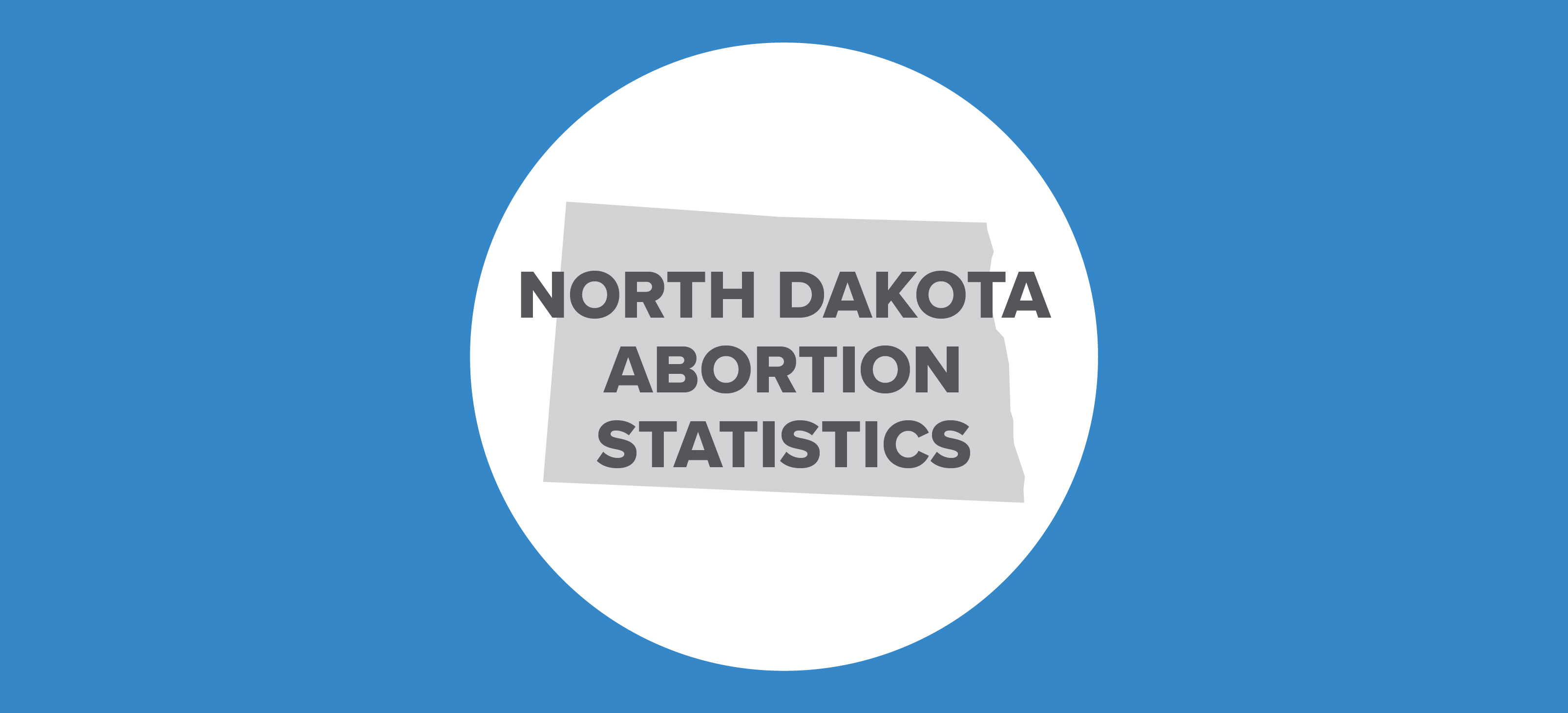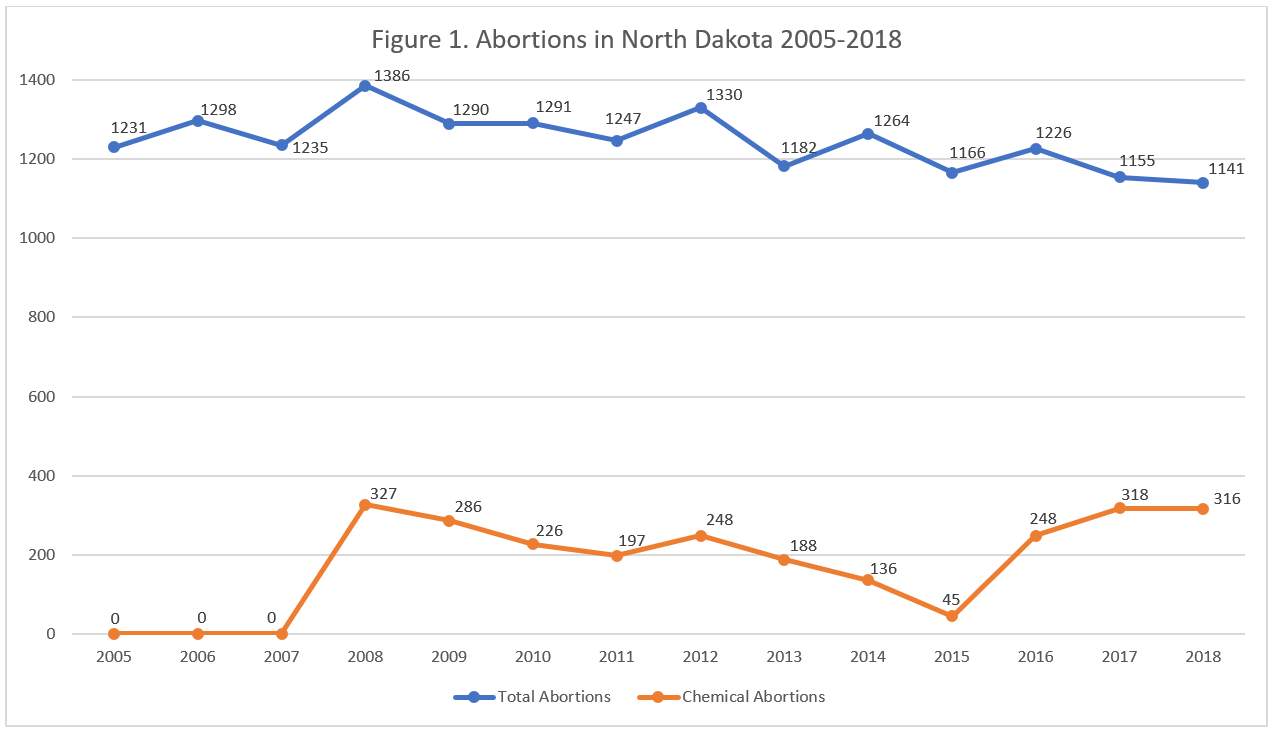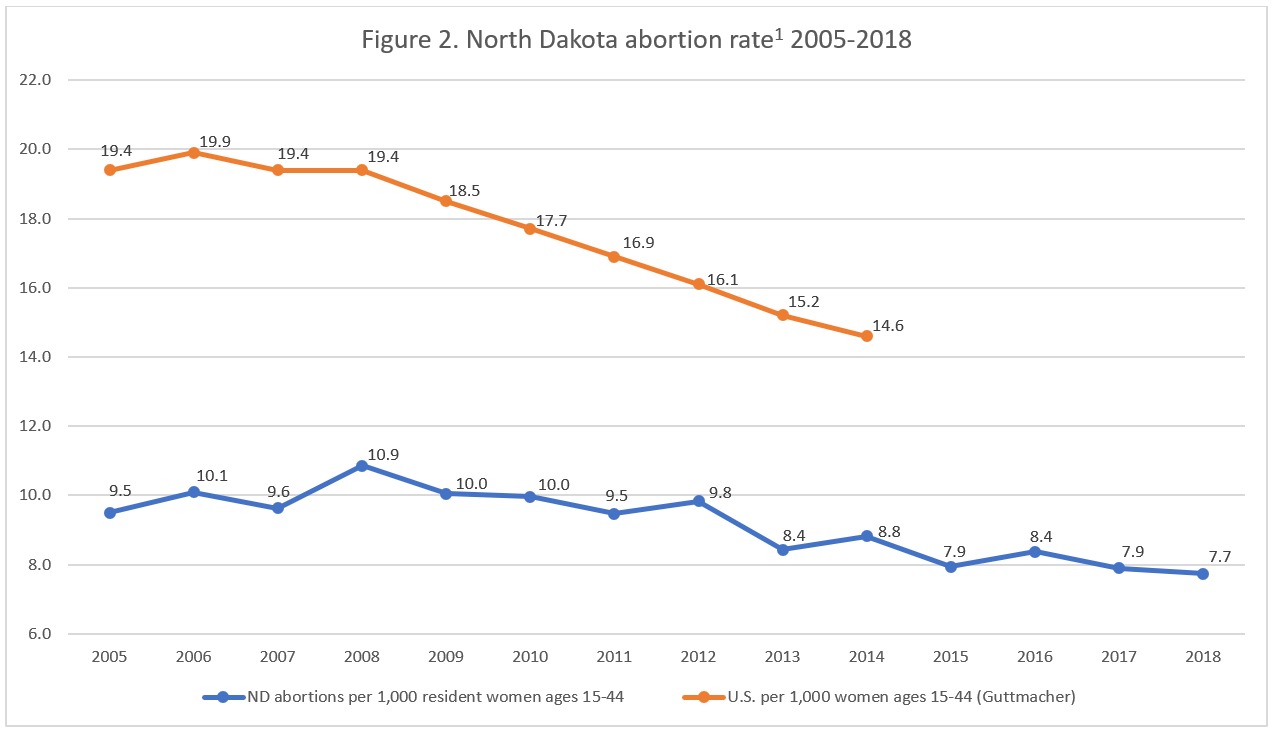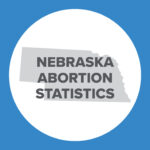Abortion Reporting: North Dakota (2018)

North Dakota’s 2018 abortion report was published on the website of the North Dakota Department of Health in June 2019. Information on the types of abortion procedures performed in North Dakota was provided to the Charlotte Lozier Institute upon request.
Changes in North Dakota Abortions, 2017-2018

*Planned Parenthood operates no centers in North Dakota.
Abortion Totals and Trends
There was little change in the number of abortions reported in North Dakota from 2017 to 2018. In 2018, there were 1,141 abortions reported, a decline of one percent (14 abortions) from the 1,155 reported in 2017 (Fig. 1). There were 316 chemical abortions in 2018, two fewer abortions than the 318 chemical abortions reported the year before. Since 1998, the earliest year of data available online, North Dakota abortions have dropped by eight percent. The number of chemical abortions reported in 2018 was similar to the 327 reported in 2008, the first year chemical abortions were reported in North Dakota. The Charlotte Lozier Institute estimates that North Dakota’s state abortion rate dropped from 7.9 abortions per 1,000 women of childbearing age in 2017 to 7.7 in 2018, lower than the national rate (Fig. 2).
State Report Summary
Seventy-three percent of the abortions reported in North Dakota in 2018 were performed on state residents, a lower percentage than in many other states. Twenty-seven percent of the abortions were on nonresidents, including 22 percent on women from Minnesota. Fifty-eight percent of the abortions were on women in their twenties (29 percent on women ages 20 to 24 and another 29 percent on women ages 25 to 29). Nine percent of the women were age 19 or younger, and 29 percent were in their thirties. Four percent were age 40 or older.
White women were in the majority at 65 percent of the abortions reported in North Dakota. Sixteen percent of the abortions were performed on African American women, 11 percent on Native American women, and eight percent on women of unknown or other races. The Charlotte Lozier Institute calculates that in 2018, North Dakota’s black abortion rate was 28 abortions per 1,000 black women of childbearing age, almost five times higher than the white abortion rate of 5.8 abortions per 1,000 white women of childbearing age.
Eleven percent of the women undergoing abortions in North Dakota had less than a high school education. Thirty-eight percent had completed high school, and 12 percent had attended some college, while 36 percent had a college degree. Three percent did not report their level of education.
Eighty-four percent of the abortions were performed on unmarried women, compared to 16 percent on married women. A majority of the women had children: 21 percent had one child, and 40 percent had two or more. Thirty-seven percent of the women had previously had an abortion. Twenty-two percent had one prior abortion, and 15 percent had more than one, while 63 percent had never had an abortion previously.
Eleven percent of the abortions reported in North Dakota occurred at five weeks of gestation or earlier. Twenty-three percent were performed at six weeks, and 33 percent occurred between seven and eight weeks of gestation. Seventeen percent were performed between nine and 10 weeks, dropping to seven percent from 11 to 12 weeks and eight percent from 13 to 15 weeks. Ten abortions, or less than one percent of the total, were performed at 16 weeks of gestation or later.
North Dakota’s abortion report does not include the types of abortion procedures used, but this information was provided to CLI upon request. In 2018, 72 percent of the abortions reported in North Dakota were performed using suction curettage, and 28 percent were chemical abortions. The month of January had the highest number of abortions (114), while the month of December had the lowest (63).
Informed Consent and Abortion Pill Reversal
North Dakota is facing a challenge to its informed consent process. In March 2019, North Dakota enacted an amendment to its informed consent law, adding a requirement that women who seek chemical abortions must be informed that it may be possible to reverse a chemical abortion if they change their minds. The law has been challenged by the American Medical Association and North Dakota’s only abortion center, who claim that abortion pill reversal is based on false science. However, preliminary research suggests that if a woman who has changed her mind is given supplemental progesterone after taking mifepristone (which acts to kill the unborn baby by blocking progesterone) and before taking misoprostol, her baby has a greater chance of survival. Hundreds of babies have been saved using this method. The lawsuit also challenges North Dakota’s requirement that women seeking abortion be told that abortion ends “the life of a whole, separate, unique, living human being.”
State Ranking
In 2016, CLI surveyed abortion reporting across the 50 states, New York City, and the District of Columbia. North Dakota’s reporting was tied for 19th best. North Dakota could include information on its informed consent process, data which is particularly pertinent as the informed consent law is challenged in court. North Dakota could also report whether any abortions caused complications, how fetal remains were discarded, and whether any abortions were performed after viability due to a medical emergency – information it already collects.

- Starting with the 2018 abortion reports, abortion rates are calculated by the Charlotte Lozier Institute to allow for easier state-to-state and year-to-year comparisons. Rates were calculated by CLI using population estimates from the United States Census Bureau. The rates were calculated using the following formula: (total number of abortions performed in North Dakota ÷ number of resident women ages 15-44) x 1,000. Rates may differ slightly from previous CLI articles due to revised population estimates.

























